Radio waves are invisible to our eyes, therefore, they do not arrive in any “color” that we’ve ever known. When we take our data and plot it, our artists can assign any color they please to the results. In this image of the famous Fornax radio galaxy, our artist tried a blue coloring for the enormous lobes of gas this galaxy’s black hole sprays out.

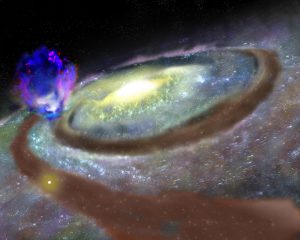
The Milky Way’s Superbubble
Astronomers using the National Science Foundation’s Robert C. Byrd Green Bank Telescope (GBT) have discovered a huge “superbubble” of hydrogen gas rising nearly 10,000 light-years above the plane of our Milky Way Galaxy. The gas may be driven by supernova explosions and the intense stellar winds from an unseen cluster of young stars in one of our Galaxy’s spiral arms. This giant gas bubble contains about a million times more mass than the Sun and the energy powering its outflow is equal to about 100 supernova explosions. The superbubble is nearly 23,000 light-years from Earth and is estimted to be between 10-30 million years old. The astronomers discovered it by combining numerous smaller images made with the GBT into one large image.
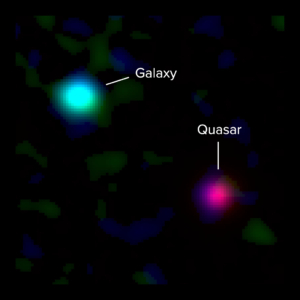
Composite ALMA and Optical Image of High Redshift Galaxies
Composite ALMA and optical image of a young Milky Way-like galaxy 12 billion light-years away and a background quasar 12.5 billion light-years away. Light from the quasar passed through the galaxy’s gas on its way to Earth, revealing the presence of the galaxy to astronomers. New ALMA observations of the galaxy’s ionized carbon (green) and dust continuum (blue) emission show that the dusty, star-forming disk of the galaxy is vastly offset from the gas detected by quasar absorption at optical wavelengths (red). This indicates that a massive halo of gas surrounds the galaxy. The optical data are from the Keck I Telescope at the W.M. Keck Observatory.
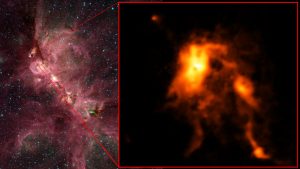
Protostar Blazes Bright, Reshaping Its Stellar Nursery
Inside the Cats’s Paw Nebula, as seen in an infrared image from NASA’s Spitzer Space Telescope (left), ALMA discovered that an infant star is undergoing an intense growth spurt, shining nearly 100 brighter than before and reshaping its stellar nursery (right).
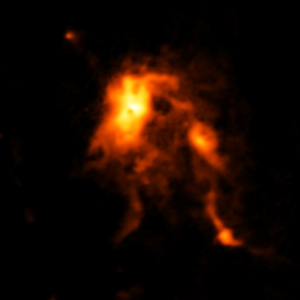
ALMA Image of the Glowing Dust Inside NGC 6334I
ALMA image of the glowing dust inside NGC 6334I, a protocluster containing an infant star that is undergoing an intense growth spurt, likely triggered by an avalanche of gas falling onto its surface.
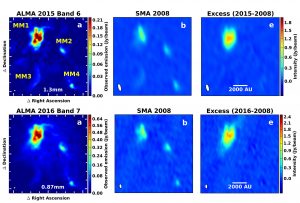
ALMA and SMA Images of NGC 6334I
Comparing observations by two different millimeter-wavelength telescopes, ALMA and the SMA, astronomers noted a massive outburst in a star-forming cloud. Because the ALMA images are more sensitive and show finer detail, it was possible to use them to simulate what the SMA could have seen in 2015 and 2016. By subtracting the earlier SMA images from the simulated images, astronomers could see that a significant change had taken place in MM1 while the other three millimeter sources (MM2, MM3, and MM4) are unchanged.





